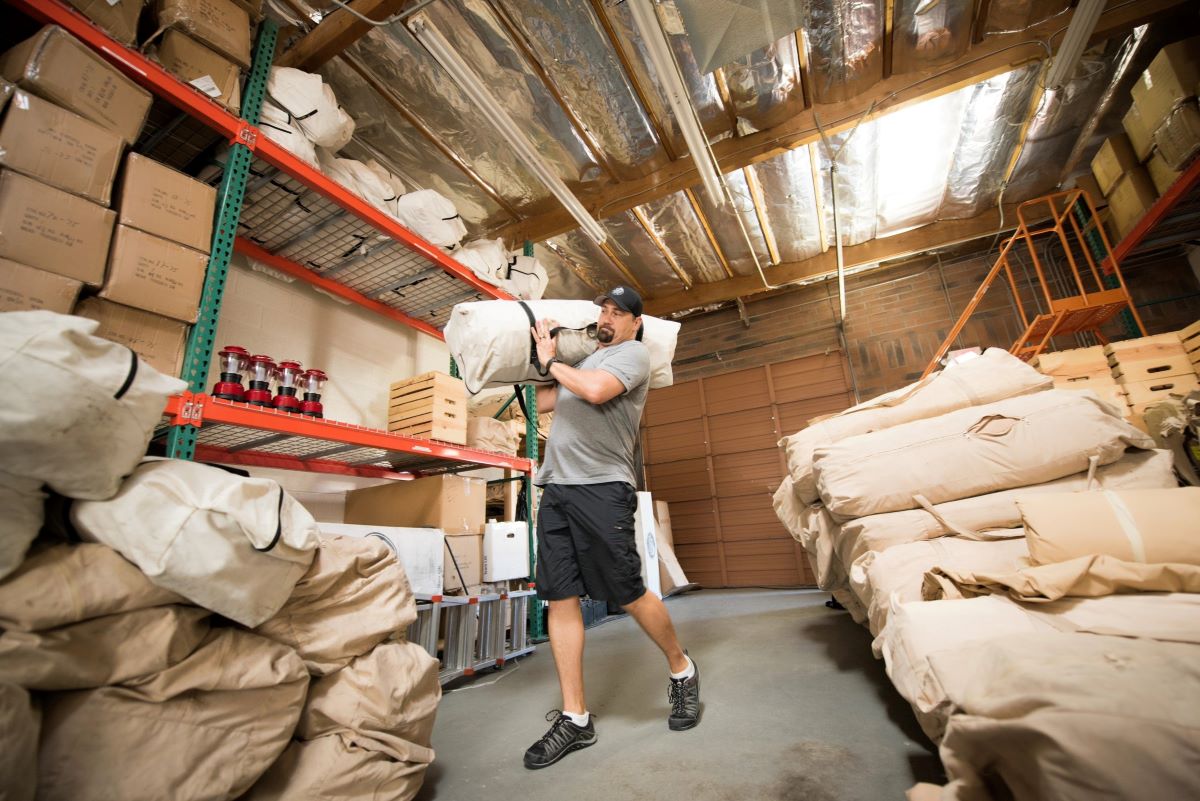

Articles
How To Store A Tent
Modified: October 19, 2024
Learn the proper techniques and guidelines for storing your tent to ensure its longevity and optimal performance. Read our articles on tent storage today!
(Many of the links in this article redirect to a specific reviewed product. Your purchase of these products through affiliate links helps to generate commission for Storables.com, at no extra cost. Learn more)
Introduction
Are you someone who loves camping and spending time in the great outdoors? If so, then you probably know the importance of having a reliable and durable tent. A good quality tent can make all the difference between a comfortable and enjoyable camping experience and a miserable one. But what happens once you return from your camping trip? How do you properly store your tent to ensure its longevity and functionality for future adventures?
In this article, we will guide you through the process of storing your tent the right way. We will cover important steps such as cleaning the tent, drying it properly, removing dirt and debris, folding it correctly, and choosing the right storage options and location. By following these guidelines, you can ensure that your tent stays in excellent condition, ready for your next camping excursion.
So, if you’re ready to learn how to properly store your tent, let’s dive in!
Key Takeaways:
- Proper tent storage is crucial for maintaining its quality, durability, and functionality. Following the steps outlined in this article ensures your tent stays in excellent condition for years to come, ready for countless outdoor adventures.
- Investing time and effort in proper tent storage can maximize the lifespan of your tent, save you money, and provide a reliable shelter for future camping excursions. By following the guidelines, you can ensure your tent remains in excellent condition, ready for your next outdoor adventure.
Read more: How To Store Roof Top Tent
Why Proper Tent Storage Matters
Properly storing your tent is essential to maintain its quality, durability, and functionality over time. Not only does it save you money by prolonging the life of your tent, but it also ensures that you have a reliable shelter when you need it the most.
Here are a few reasons why proper tent storage matters:
- Prevents Mold and Mildew Growth: When a tent is packed away while still wet or damp, it creates the perfect breeding ground for mold and mildew. These microorganisms can cause unpleasant odors, weaken the fabric, and potentially pose health risks. Properly drying your tent before storage helps prevent mold and mildew growth.
- Preserves the Waterproof Coating: Most tents come with a waterproof coating to protect you from rain and moisture. Improper storage, such as folding a wet tent, can damage and degrade this coating, leading to decreased waterproofing capabilities. Storing your tent dry and in the right manner helps preserve the waterproofing and extends its lifespan.
- Reduces Wear and Tear: Folding or stuffing a tent haphazardly can lead to unnecessary wear and tear on the fabric, zippers, poles, and seams. This can result in leaks, tears, or even structural damage. By following proper storage techniques, you can minimize wear and tear, ultimately extending the lifespan of your tent.
- Maintains Tent Shape and Functionality: Storing a tent in a compressed or cramped position for an extended period can cause the fabric to lose its shape and elasticity. It may become difficult to set up and may not provide adequate protection from the elements. Properly folding and preserving the tent shape ensures that it remains functional and easy to pitch when you’re ready to use it again.
By investing a little time and effort in proper tent storage, you can maximize the lifespan of your tent and have it ready for countless outdoor adventures to come. Now, let’s move on to the next step in the process: cleaning the tent.
Cleaning the Tent
Before storing your tent, it’s crucial to clean it thoroughly to remove any dirt, grime, or stains that may have accumulated during your camping trip. Cleaning the tent not only helps maintain its appearance but also prevents the growth of mold or mildew while it’s in storage. Here’s a step-by-step guide on how to clean your tent:
- Shake off Loose Debris: Start by shaking off any loose dirt or debris from the tent. Gently flip the tent upside down and give it a few good shakes to remove any leaves, twigs, or other particles that may be trapped inside.
- Wipe Down the Interior: Use a soft cloth or sponge and mild soap to wipe down the interior of the tent. Pay special attention to any areas that are visibly dirty or stained. Avoid using harsh chemicals or abrasive scrubbers, as they could damage the tent fabric or coatings.
- Clean the Exterior: Next, clean the exterior of the tent using water, mild soap, and a sponge or soft brush. Gently scrub the fabric, being careful not to apply too much pressure. Rinse thoroughly with clean water to remove any soap residue.
- Spot Clean Stains: If there are any stubborn stains on the tent fabric, you can try spot cleaning them with a gentle stain remover. Test the stain remover on a small, inconspicuous area first to ensure it doesn’t cause any discoloration or damage.
- Pay Attention to Zippers and Fasteners: Wipe down the zippers, fasteners, and any other hardware with a clean, damp cloth. This helps remove any dirt or grime that could affect their functionality.
- Allow the Tent to Air Dry: After cleaning, allow the tent to air dry completely before moving on to the next step. Hang it or lay it flat in a well-ventilated area, avoiding prolonged exposure to direct sunlight, which can cause fading or damage to the fabric.
Once your tent is clean and dry, you’re ready to move on to the next crucial step: properly drying the tent.
Drying the Tent
After cleaning your tent, it’s essential to ensure that it is thoroughly dried before storing it. Proper drying not only helps prevent the growth of mold and mildew but also prevents any potential damage to the fabric or coatings. Here are some steps to follow for drying your tent:
- Find a Suitable Drying Location: Choose a well-ventilated area to dry your tent. Avoid direct sunlight, as prolonged exposure to UV rays can degrade the fabric. An open garage, shady spot, or a well-ventilated room can be ideal.
- Set up the Tent: Assemble the tent, following the manufacturer’s instructions. Ensure that all the poles are properly inserted and the tent is securely pitched. This allows for proper air circulation and drying.
- Open Doors and Windows: If the weather permits, open the tent doors and windows to improve air circulation. This helps expedite the drying process by allowing fresh air to flow through and carry away moisture.
- Use a Towel or Cloth: Gently blot any remaining moisture on the tent fabric using a clean, absorbent towel or cloth. Avoid rubbing or wringing the fabric, as this can damage the tent material.
- Leave the Tent to Air Dry: Allow the tent to air dry completely. The drying time may vary depending on the weather conditions, but it’s important to be patient. Ensure that both the interior and exterior surfaces of the tent are fully dry before moving on to the next step.
- Verify the Dryness: To ensure the tent is completely dry, touch different parts of the fabric, including seams and corners. If any areas feel damp or cool to the touch, continue the drying process until the entire tent is dry.
Properly drying your tent before storage helps prevent moisture-related issues and preserves its integrity. It’s worth taking the time to ensure that your tent is thoroughly dry to avoid any potential problems down the line.
With a clean and dry tent, let’s move on to the next step: removing dirt and debris.
Removing Dirt and Debris
Before storing your tent, it’s important to make sure that it’s free of any dirt, dust, or debris that may have accumulated during your camping trip. Removing dirt and debris not only keeps your tent clean, but it also helps prevent any potential damage to the fabric and zippers. Here are some steps to follow for removing dirt and debris from your tent:
- Inspect the Tent: Carefully examine the tent for any visible dirt, mud, or loose debris. Pay attention to areas such as the tent floor, rainfly, and vestibules.
- Brush Off the Loose Debris: Use a soft-bristled brush or a clean cloth to gently brush off any loose dirt or debris from the tent surfaces. Start from the top and work your way down, ensuring that you cover all the areas.
- Focus on Problem Areas: If there are any stubborn or caked-on dirt spots, you can use a damp cloth or sponge to gently dab and clean the affected area. Avoid rubbing vigorously as it may cause damage to the fabric.
- Pay Attention to Zippers and Fasteners: Clean the zippers and fasteners using a soft brush or cloth to remove any dirt or debris that may hinder their functionality. Gently brush along the zipper tracks and openings to ensure they are clear of debris.
- Check and Shake Out the Tent: Before folding the tent, give it a final check to ensure it’s free of dirt and debris. You can also gently shake the tent to dislodge any remaining loose particles.
By removing dirt and debris from your tent, you not only keep it in good condition but also ensure that it’s ready for your next camping adventure. With a clean and debris-free tent, it’s time to learn the proper technique of folding the tent.
When storing a tent, make sure it is completely dry to prevent mold and mildew. Store it in a cool, dry place away from direct sunlight to prolong its lifespan. Avoid storing it in a compressed or folded position for long periods to prevent damage to the fabric and seams.
Read more: What Is A Bathtub Floor In A Tent
Folding the Tent
Folding your tent properly is crucial for efficient storage and ease of use in the future. By following the correct folding technique, you can minimize the risk of wrinkles, creases, and damage to the tent fabric. Here’s a step-by-step guide on how to fold your tent:
- Remove Stakes and Guylines: Start by removing any stakes, guylines, or accessories that are attached to the tent. Make sure the tent is empty before proceeding with the folding process.
- Spread Out the Tent: Lay the tent flat on the ground, ensuring that it’s spread out evenly. Take a moment to straighten out the tent fabric and ensure that there are no wrinkles or folds.
- Begin Folding: Start folding the tent lengthwise from one end toward the other. Fold it into thirds or quarters, depending on the size of your tent. Take your time to ensure that each fold is neat and even.
- Avoid Sharp Folds: As you fold the tent, try to avoid creating sharp angles or creases. Sharp folds can weaken the fabric and cause unnecessary stress points. Aim for smooth and gradual folds.
- Roll or Squash Method: Once the tent is folded into a manageable size, you can either roll it tightly or use the squash method. For the roll method, start at one end and roll the tent tightly, squeezing out any excess air. For the squash method, gently compress the folded tent into a compact shape.
- Secure with Straps or Bag: Use tent straps or a stuff sack, if provided, to secure the folded tent. This helps keep it compact and prevents it from unfolding during storage or transportation.
Remember, the goal is to fold the tent in a way that minimizes stress on the fabric and helps maintain its shape. Take your time and be gentle throughout the folding process. With the tent properly folded and secured, you can now explore the various storage options available.
Storage Options
When it comes to storing your tent, there are a few different options to choose from, depending on your available space and personal preferences. Here are some common storage options to consider:
- Tent Bag or Stuff Sack: Many tents come with a designated bag or stuff sack for storage. These bags are designed to fit the tent and usually have compression straps to keep the tent compact. Using the tent bag or stuff sack is convenient and keeps everything in one place.
- Plastic Bin or Container: If you prefer a more organized storage solution, you can use a plastic bin or container to store your tent. Make sure the bin is clean and dry before placing the folded tent inside. This option provides additional protection against dust, pests, and potential damage.
- Hanging Storage: For those with limited floor space, hanging the tent can be a space-saving option. You can use a hanger or hooks to suspend the tent in a dry and well-ventilated area, such as a closet or garage. This method helps maintain the shape of the tent and prevents it from getting crushed.
- Shelf or Rack: If you have a dedicated storage space, such as a shed or garage, you can store your tent on a shelf or rack. Make sure the shelf or rack is clean and free from any sharp objects that could potentially damage the tent fabric.
- Under-Bed Storage: Utilizing the space under your bed is a convenient option, especially for smaller tents. Invest in under-bed storage containers that fit your tent dimensions, ensuring that it’s protected and out of the way when not in use.
Regardless of the storage option you choose, it’s important to keep your tent in a dry and cool environment, away from direct sunlight and extreme temperatures. Avoid storing it in a damp basement or attic, as excessive moisture or heat can cause damage.
Now that you have an idea of the storage options available, let’s move on to the next important consideration: choosing the right location for storing your tent.
Choosing the Right Location
When it comes to storing your tent, choosing the right location is crucial to ensure its longevity and protection. Here are some factors to consider when selecting the ideal storage location:
- Temperature and Moisture Control: Look for a storage area that maintains a moderate temperature and low humidity. Extreme temperatures, such as hot attics or freezing basements, can deteriorate the tent fabric, while high humidity can encourage the growth of mold or mildew. Aim for a dry and cool environment.
- Avoid Sunlight Exposure: Prolonged exposure to direct sunlight can cause the tent fabric to fade and weaken over time. Choose a storage location that is away from windows or opt for covering the tent with a lightweight, breathable fabric or a tarp to provide additional protection against UV rays.
- Pest Prevention: Protect your tent from potential damage caused by pests, such as rodents or insects. Avoid storing the tent in areas prone to infestations and consider using pest deterrents like mothballs or cedar chips.
- Accessibility: Ensure that your tent is easily accessible when you need it. Consider the convenience of the storage location and how easily you can retrieve and transport the tent for your next camping trip.
- Clean and Clear Space: Clear out any clutter or debris from the selected storage location to create a clean and open space for your tent. This helps prevent any potential damage from sharp objects or accidental spills.
- Protection from Water and Dust: If the chosen storage location is not completely waterproof or dustproof, consider placing the folded tent in a plastic bag or using a waterproof cover to provide an added layer of protection.
By taking these factors into consideration, you can ensure that your tent is stored in an optimal environment that promotes its longevity and keeps it in excellent condition for future camping expeditions.
Now that you have selected the right location, let’s move on to some tips for long-term storage of your tent.
Tips for Long-Term Storage
Proper long-term storage of your tent is essential to maintain its quality and prolong its lifespan. Here are some helpful tips to follow when storing your tent for an extended period:
- Ensure Thorough Cleaning and Drying: Before storing your tent, make sure it’s thoroughly cleaned and completely dry. Any moisture left in the fabric can lead to mold or mildew growth and compromise the integrity of the tent.
- Avoid Compression and Tension: When storing your tent, avoid compressing it excessively or putting too much tension on the fabric. This can lead to permanent creases, weaken the material, and affect its overall performance.
- Don’t Store in a Stuff Sack: While the tent may come with a stuff sack, it’s best to avoid storing it in the compressed state for extended periods. The constant pressure can damage the fabric and compromise the tent’s shape.
- Use Acid-Free Tissue or Cloth: When storing your tent, consider using acid-free tissue paper or clean, breathable cloth to prevent any chemicals or dyes from transferring onto the fabric. This adds an extra layer of protection.
- Inspect Before Use: Before using your tent after a long period of storage, it’s important to inspect it carefully. Check for any signs of damage, including tears, mildew, or compromised waterproofing. Repair or replace any faulty components before heading out on your next adventure.
- Keep Storage Area Ventilated: To prevent the accumulation of moisture, ensure that the storage area remains well-ventilated. Adequate airflow helps keep the tent dry and discourages the growth of mold or mildew.
- Store Poles and Accessories Separately: If possible, store the tent poles and accessories separately from the tent itself. This minimizes any potential damage or stress on the fabric and keeps everything organized.
- Rotate Folding Techniques: To avoid creases in the same areas over time, alternate the folding techniques each time you store your tent. This helps distribute the stress evenly and prolongs the life of the fabric.
By following these tips, you can ensure that your tent remains in excellent condition during long-term storage. When the time comes to use it again, you’ll have a reliable and well-preserved shelter for your outdoor adventures.
Now that you’re equipped with the knowledge of proper tent storage, it’s time to put it into practice and enjoy the benefits of a well-maintained tent. Happy camping!
Read also: 9 Best Bed Tent for 2024
Conclusion
Properly storing your tent is essential for its longevity and continued functionality. By following the steps outlined in this article, including cleaning the tent, drying it thoroughly, removing dirt and debris, folding it correctly, and selecting the right storage location and options, you can ensure that your tent stays in excellent condition for years to come.
Cleaning and drying your tent before storage helps prevent mold, mildew, and damage to the waterproof coating. Removing dirt and debris keeps the fabric and zippers in good shape, while folding the tent correctly reduces wear and tear. Choosing the right storage options and location, such as using a tent bag or stuff sack, hanging storage, or plastic bins, protects your tent from dust, pests, and potential damage. Lastly, following tips for long-term storage, like avoiding compression, inspecting before use, and keeping the storage area well-ventilated, further ensures the tent’s longevity.
Remember, your tent is not just a shelter; it’s an investment that deserves proper care. By dedicating a little time and effort to store your tent correctly, you can extend its lifespan, save money, and ensure you have a reliable and comfortable shelter for future camping adventures.
Now that you have the knowledge and understanding of proper tent storage techniques, it’s time to put them into practice. Enjoy your camping trips with a well-maintained tent, knowing that it’s ready to provide you with comfort and protection in the great outdoors.
Frequently Asked Questions about How To Store A Tent
Was this page helpful?
At Storables.com, we guarantee accurate and reliable information. Our content, validated by Expert Board Contributors, is crafted following stringent Editorial Policies. We're committed to providing you with well-researched, expert-backed insights for all your informational needs.


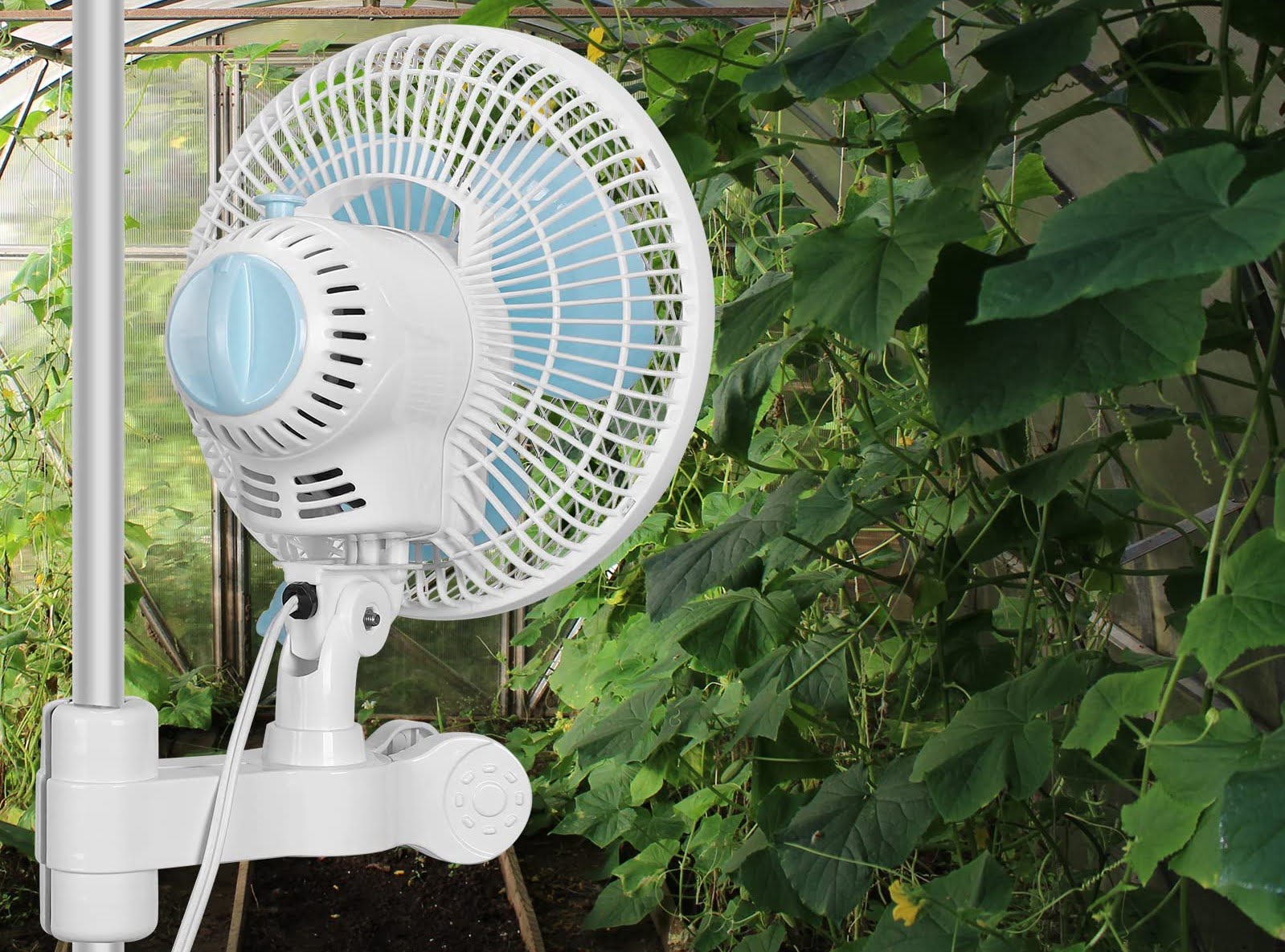
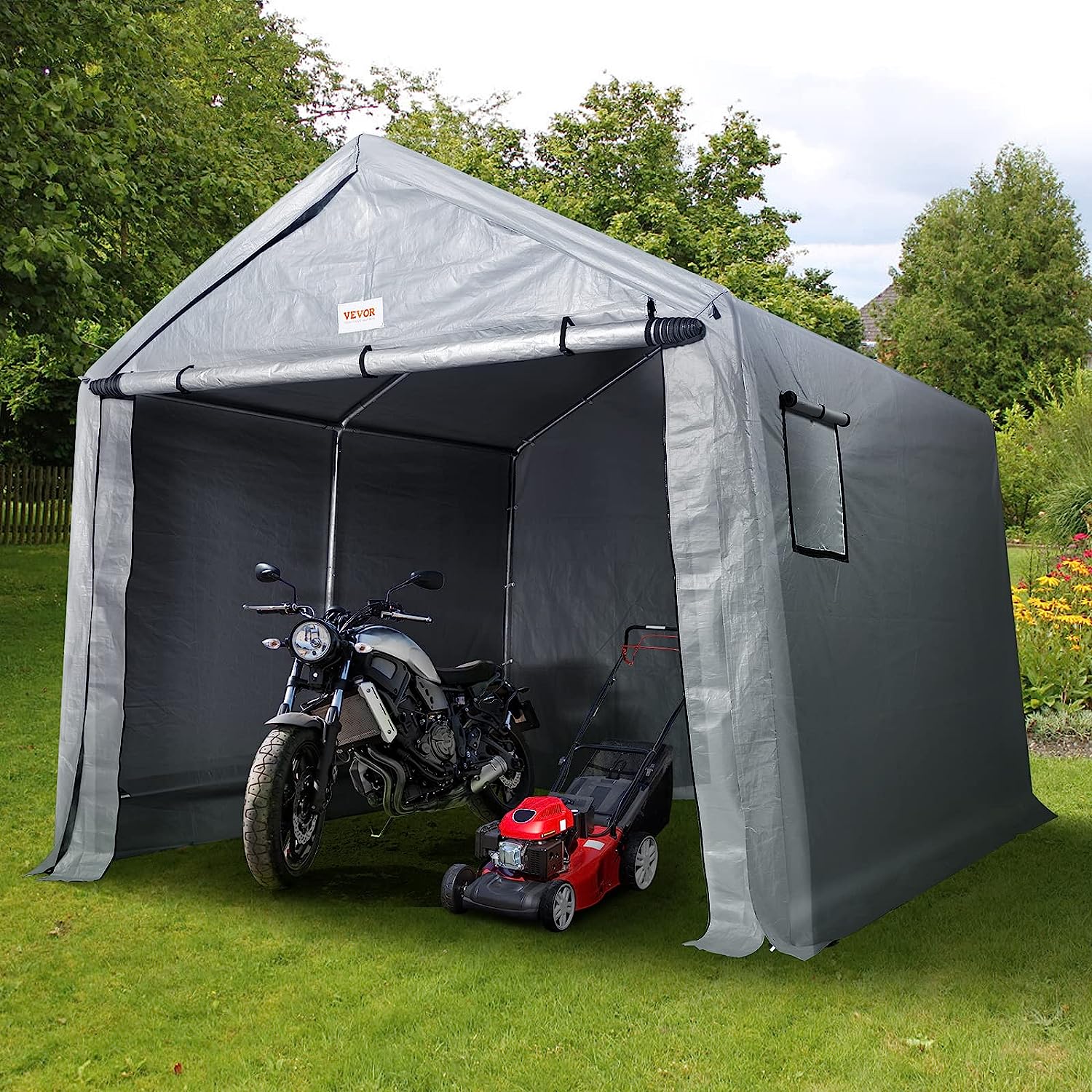
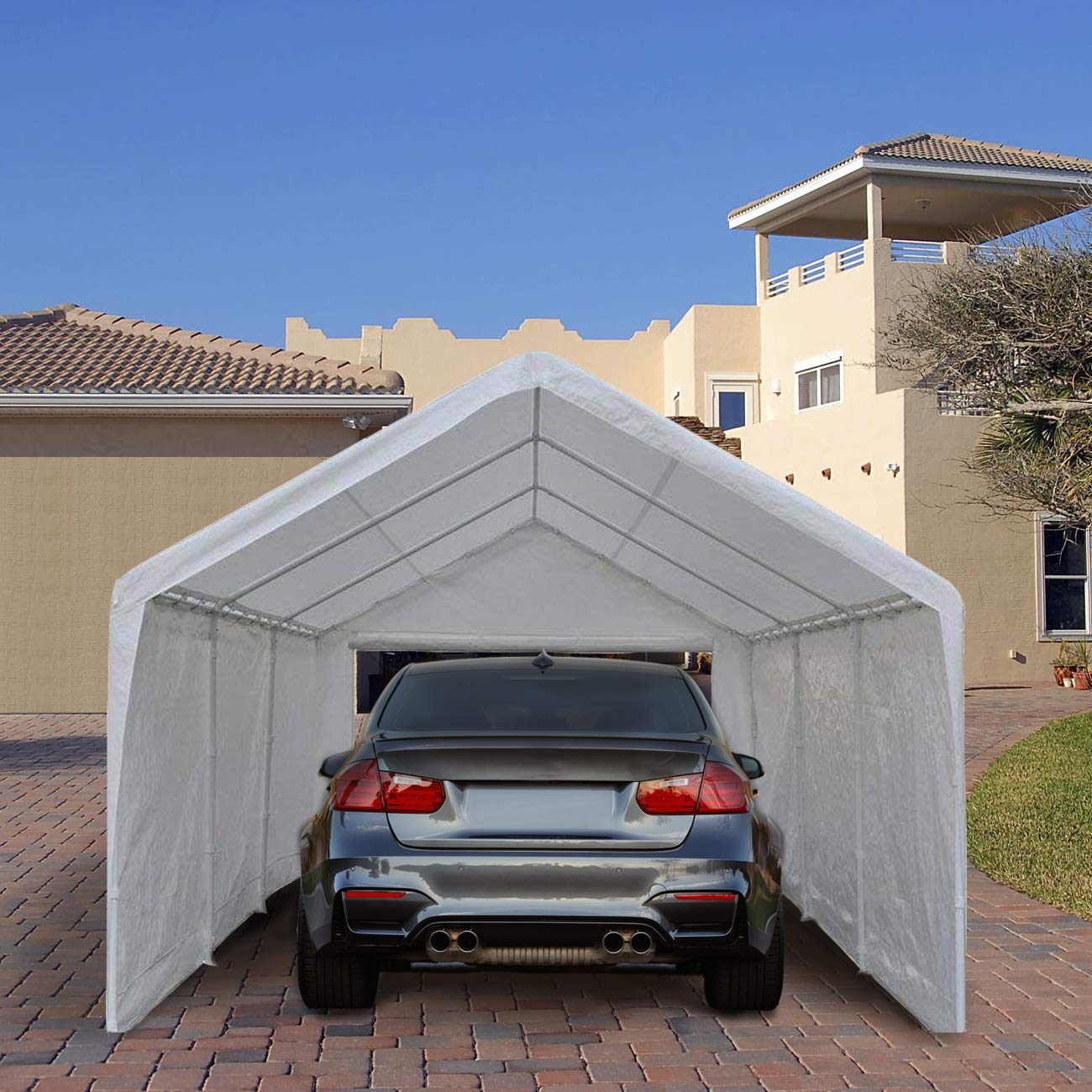


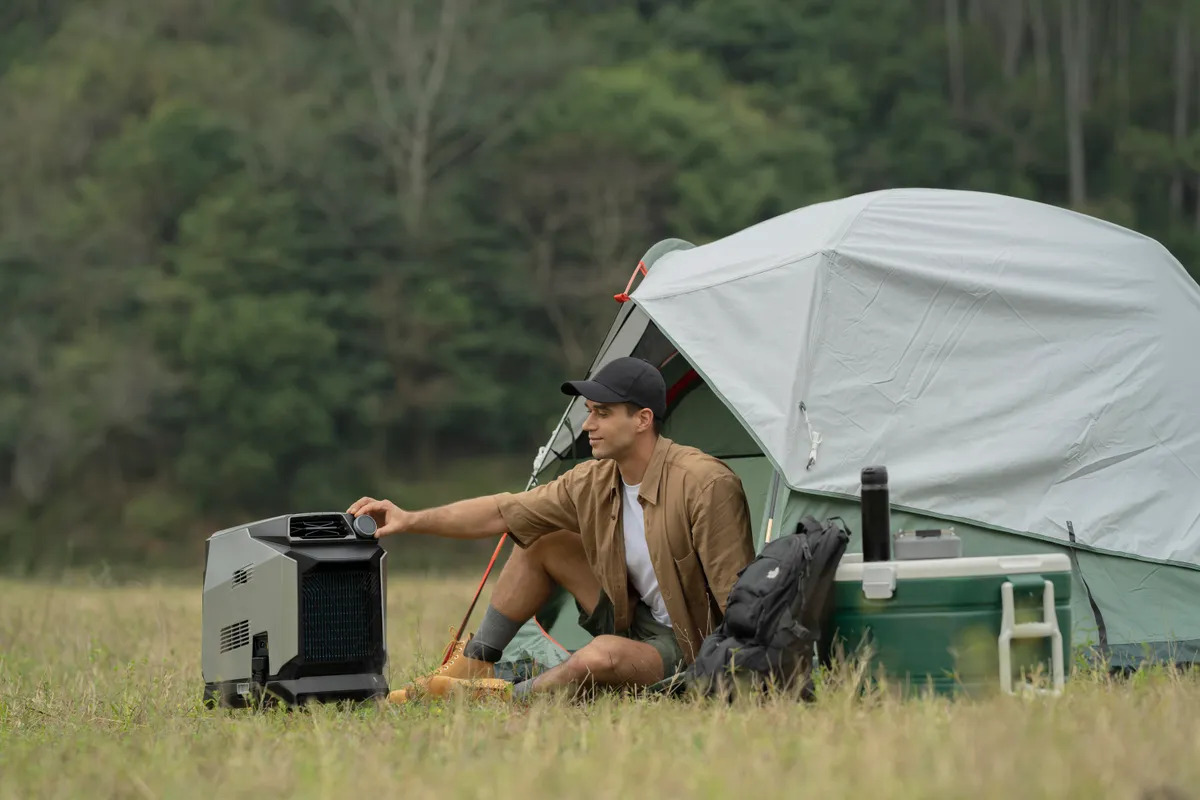
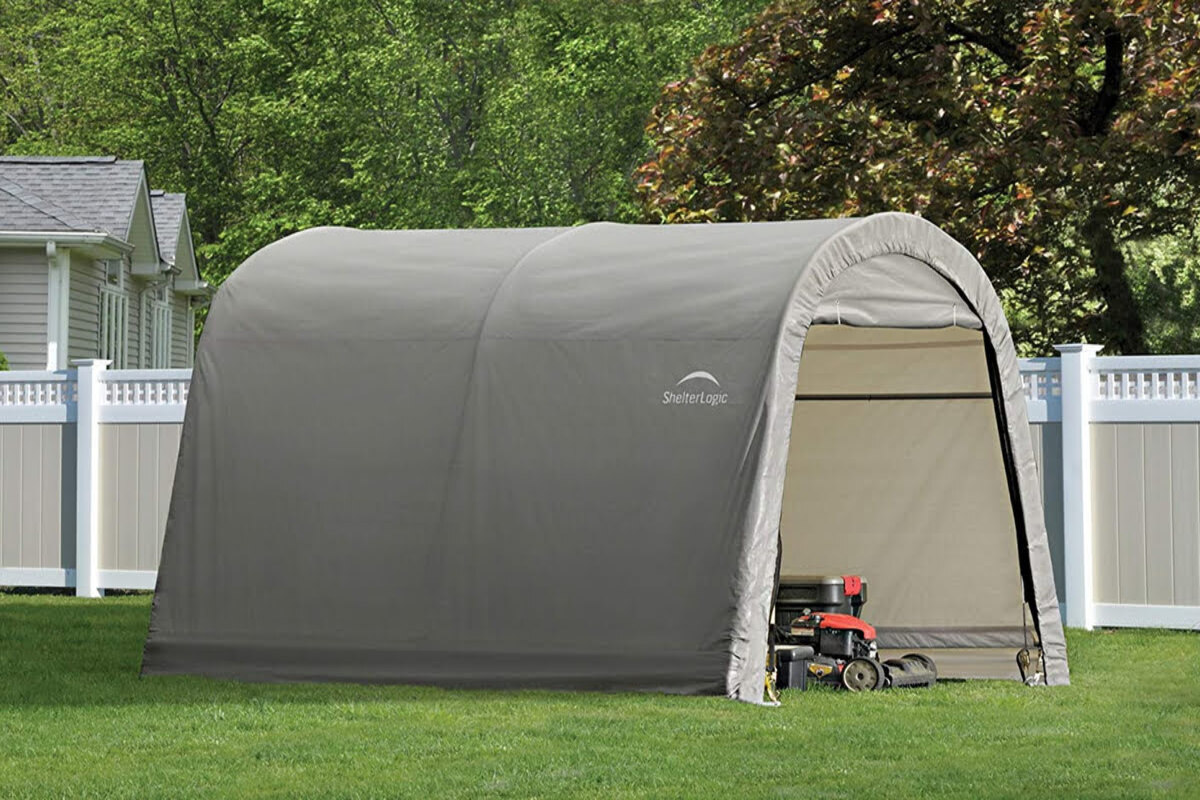
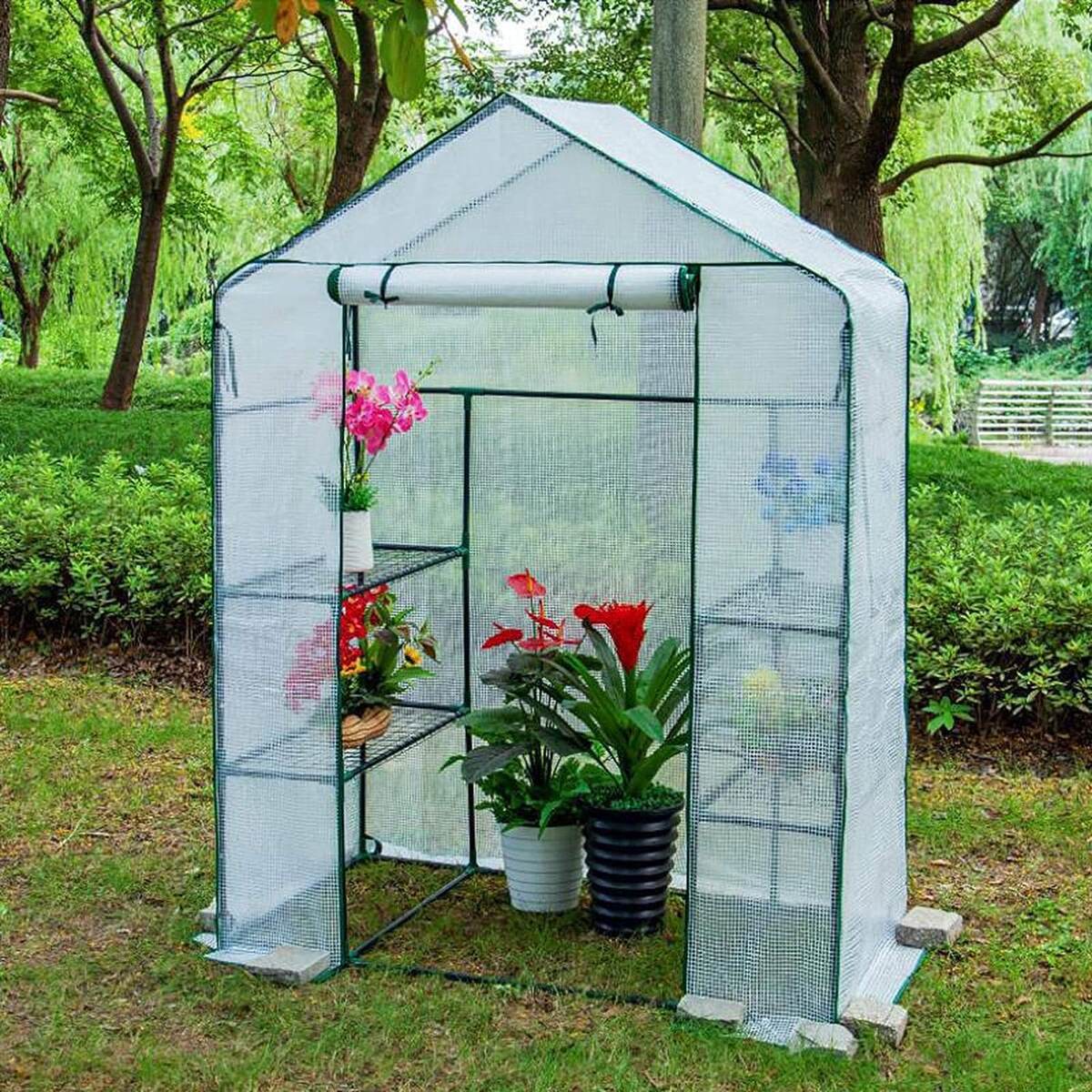
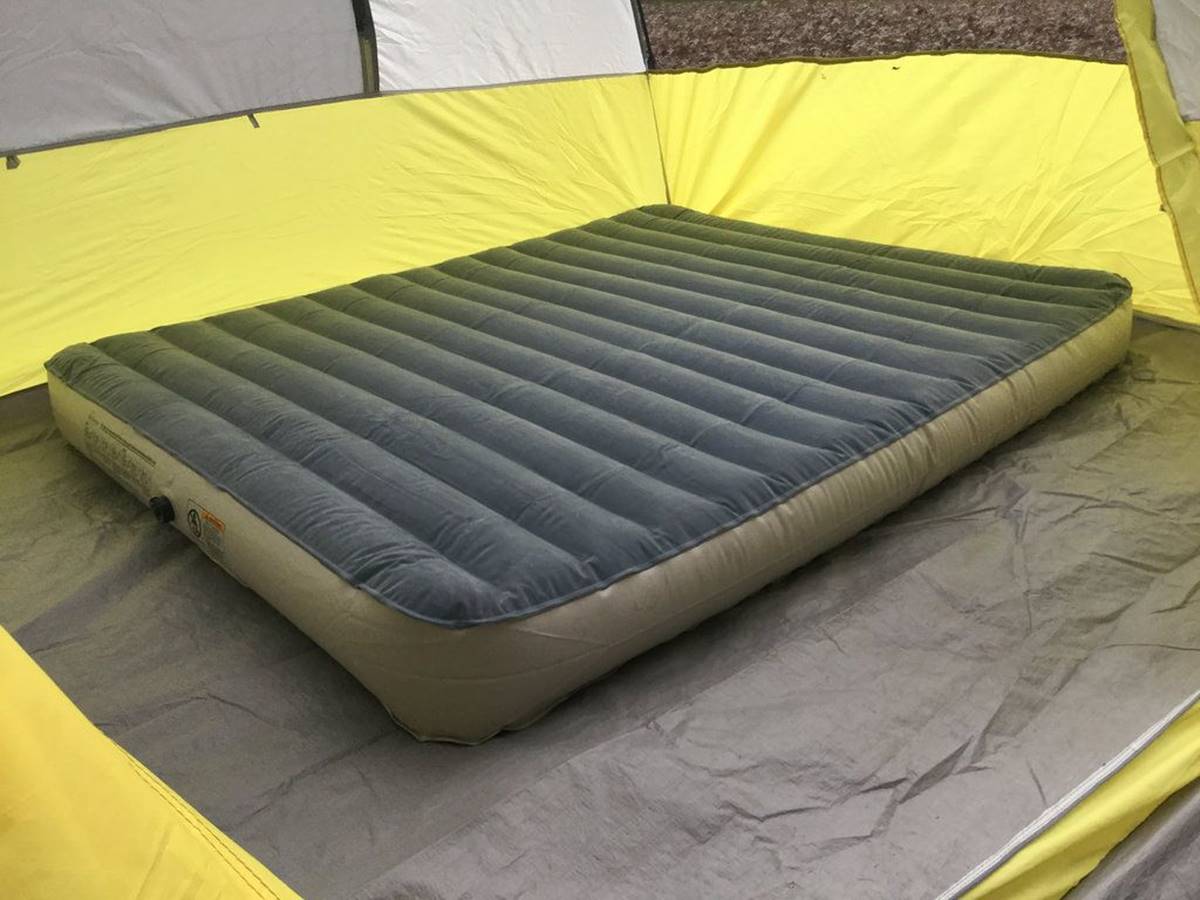

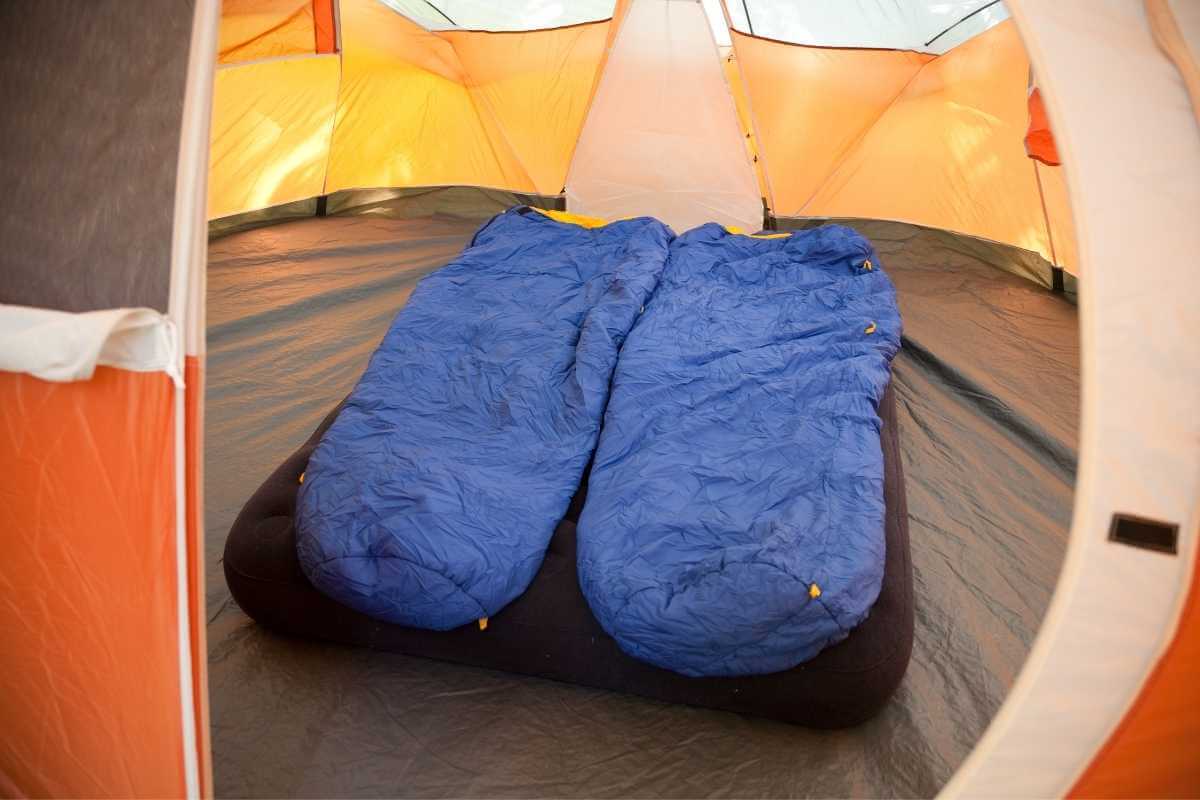

0 thoughts on “How To Store A Tent”